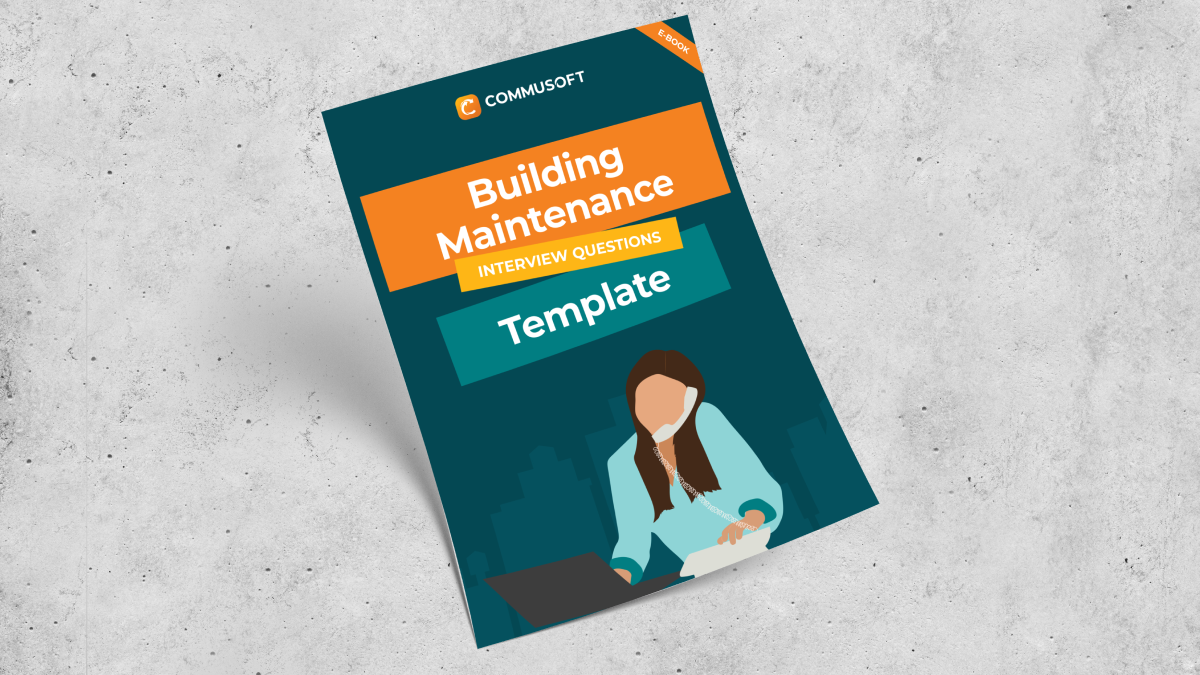Planned Preventive Maintenance: 5 PPM Challenges Automation Can Solve
September 17, 2019 | Read: 10 minutes

From introducing more and more advanced tools to getting technicians to be more tech savvy, companies are doing everything they can to stand out from the competition and earn more business.
The field service industry has grown and adapted to the new demands of the market. Winning maintenance contracts is essential if you’re aiming for a sustainable growth and preventive maintenance is the way to do it. But if you’re not aware of the PPM challenges that await you, you should definitely keep on reading!

What is Planned Preventative Maintenance (PPM)?
Just to make sure we’re on the same page…
The definition of planned preventative maintenance (abbreviated PPM) is a scheduled routine maintenance of assets that are serviced according to a maintenance contract. They’re often part of service level agreements, where a service provider like a fire and security company, agrees to regularly inspect and service assets as part of a contract.
They may or may not be the same company that installed said assets. It’s the usual practice but it’s not mandatory for the same company to do both. Planned preventative maintenance refers to the same process and it’s simply a different spelling; for the sake of clarity, we’ll stick to the first.
PPM Challenges and How to Overcome Them
1. Win Bigger Maintenance Contracts
Many field service companies’ first encounter planned preventive maintenance when they start tendering for contracts.
Sure, domestic customers can ask for preventive work as well but those work orders fall more into the realm of service agreements, where you know that once every 6 or 12 months, you need to inspect their alarm system. It’s not rocket science and it’s not in the same league as the PPM challenges we’re talking about today.
Commercial buildings, on the other hand, come with hundreds if not thousands of individual assets. From emergency lights to fire extinguishers to access control systems and everything in between, companies are responsible for the safety of every individual in the building, as well as the customer’s ability to run their business. If the access system is down and employees can’t get in, then your customer could lose a whole day’s worth of revenue.
The challenge is that we’ve never heard of a maintenance contract that did not come with a few PPM challenges. Whether it’s the sheer number of assets you need to track, recording the location and history of each asset, or matching the right technician to the right work-order, it can easily get out of hand. And when it does, well… like we mentioned in our security service level agreements article, a fine will be the least of your problems.
If you compare domestic to commercial, you can easily see that the main problem is scale. It’s easy to keep trace of maintenance when it’s an asset or two at a single address, but as soon as we’re talking hundreds, you either need to hire just as many operational managers or invest in software that can automate the process for you.
Since they’re mostly repetitive tasks, they’re the ideal target for software to tackle. You can set billable rates for labor and travel. Furthermore, you can even segment them by work order description to ensure you’re using the correct rates.
You can also add pricing, parts, and fair usage terms, as well as select which assets the contract covers. With the right tools, even complex contracts and maintenance agreements won’t be much trouble for your managers.
2. Improve Your Planned Preventive Maintenance Schedule
One of the biggest PPM challenges field service companies come across is efficient scheduling. Even contractors that are already using a software to optimize their business process can struggle if the software is not complex enough to keep up with their growth. Most of them are sadly not.
If all they offer is a simple scheduling feature and a cute app, start looking somewhere else because your company has outgrown it. What barely worked for 5 technicians won’t work for a team of 50.
More often than not, the assets they need to service require thorough regular inspections and specialized technicians. This means that working them into a schedule is not just a matter of scribbling it into a calendar. A planned preventive maintenance schedule needs to take all this into account and fit it in with your other work orders.
The field service world doesn’t stop spinning because you’ve signed a maintenance contract. Like the old saying goes, don’t put all your eggs in one basket and don’t rely on one single contract to make your business work. So all those hundreds of assets? Multiply them by the number of maintenance contracts and you’ve got a job only a machine could do well.
If your customers expect time-based planned maintenance, software will help you create detailed PPM schedules as part of your service contract management options. A planned preventive maintenance calendar needs to be visual and interactive, allowing you to view the entire year and every required task.
Good software will help you set how often each appointment needs to occur and then allow you to book accordingly. If there is a more efficient schedule, the system should suggest revisions to reduce the number of visits you make to the property therefore helping you to increase productivity in your field service business. As you can surely tell, there are a lot of computational problems that go into producing a good PPM schedule.
3. Earn Paperless Compliance
We’ve spoken about making your office paperless before:
Being paperless is hardly a matter of choice these days. Sure, you can stick to pen & paper if you like your company just the way it is but if you want to grow, boost your profits, and make life easier for your team, you already have some kind of software in place. Paper is a perishable medium and companies have finally realized it. Not only is it environmentally damaging, but it’s also easy to misplace or destroy. It only takes a poorly balanced cup of coffee to ruin a stack of irreplaceable documents.
And yet, many businesses stick to the old ways, making paperless compliance with service level agreements a real PPM challenge. When assessing maintenance contract proposals, commercial customers want to see a strong track record of respecting previous contracts and they want proof, preferably digital because it can be more difficult to tamper with.
Accountability is key in demonstrating your trustworthiness. If you can’t track who scheduled an appointment, where your stock is, and how your technicians make use of company resources, then you’ll find yourself with more PPM challenges to keep you away from those big maintenance bucks.
Automation can help you keep your PPM strategy compliant with the service level agreement you’ve signed. This ensures your staff is aware at all times of which appointments are in the calendar and which aren’t. Software implies that you’re already paperless, of course, so you’re overcoming at least one of your PPM challenges.
4. Implement Time-based Preventive Maintenance
Field service companies naturally deal with bounded assets (like fire extinguishers) and other critical assets, where downtime can have serious financial consequences, as well as an impact on the overall safety level of a building. This means that time-based preventive maintenance is essential to impressing customers and winning bigger commercial maintenance contracts.
Additionally, preventive maintenance, particularly time-based, sits at the opposite end of the spectrum from reactive work. While the former is under your control and you have all the information you need on the work orders, the latter concerns emergency work you need to do if you neglect preventing breakdowns. And you know how they say prevention is better than cure, right? Well, having to do reactive work means dealing with random phone calls late on weekends because an alarm you’ve forgotten to service is flashing.
If you’ve mentioned it in your SLA that you’ll deal with anything in a matter of hours, then you’re under pressure to find the right tech and send him off on his way as soon as possible. This might mean overtime – which is costly – and another obstacle in your scheduling process.
Investing in the right planned maintenance software means that time-based preventive maintenance will not be an issue anymore. Your employer will see an improved asset reliability rate, as you’re taking care of problems before they even become problems. Ideally, your software will also be able to help you understand the labor costs associated with each preventative maintenance plan. Therefore you’ll a comparison at hand and a choice of the most efficient schedule.
Having control over your work-orders means you avoid unplanned expenses, overtime, and stressful situations for your team. Additionally, you can also offer a better field service customer experience.
5. Manage Your Planned Preventive Maintenance Data
With pen & paper, you used to suffer from a lack of data and misplaced historical files. You simply didn’t have enough time to compile everything into a meaningful report. Now that you’ve got yourself a software, regardless of how complex it is, you automatically have access to its analytics. This way, you’re able to see at a glance how your business is doing and where you need to improve.
PPM in particular is a data rich area of your management processes. If implemented with the right fire and security automation software, plumbing software, or any other trade, it should reveal everything about your business behavior. When it comes to maintenance contracts, your fix-rate, number of emergency work-orders, and labor costs are invaluable. But simply having all that data is just another of your PPM challenges if you don’t use it right.
On one hand, the data resulting from your field service automation software should inspire you to implement new strategies. If your recall-rate is at an all time high, you know you have to look into the reason. Because software allows you to view your history of appointments, you can identify issues like technicians without the right skills or accreditation being sent to work orders, a lack of parts in your inventory system, etc.
You can’t start fixing a problem if you don’t know where to start!
Additionally, another solution to these data PPM challenges is to use it for marketing purposes. When you tender for a commercial maintenance contract, prospective customers like to look at your track-record. You would do the same thing if you were trying to find a business partner, right? Then why not take advantage of your software’s reporting features to produce visual accounts of your experience? Impress them with hard proof of your scheduling prowess.
This will also inform the customers that you’re able to be transparent with them. Make sure to prove that you can keep them in the loop when it comes to PPM.
The Takeaway
Now it’s up to you! If you understand these 5 PPM challenges, you’ll see that automation can help with each and every one. More than a simple gimmick, software can easily put you in the big leagues. Get ready to leave the competition far behind!
The ability to schedule any maintenance plan, regardless of the number of assets, track your technicians’ activities, report back, and keep your customers in the loop will give you the advantage you need to take your business to the next level.
In the meantime, make sure to download our eBook if you’d like to take some of the knowledge home!

Cristina Maria
I'm here to bring you next-level strategies to the field service industry. When I'm not working on the best tips to grow your business, I'm on the lookout for sci-fi novels and cookie recipes.








